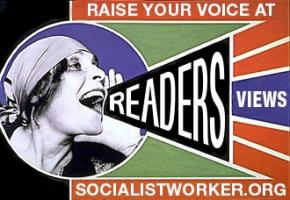Views in brief
Bracing for disaster capitalism
AS A Hurricane Katrina survivor in New Orleans, it is painful just watching television coverage of the unfolding disaster being inflicted on people in Texas by Hurricane Harvey and the woefully inadequate response of officials to this dire situation. It feels like watching Katrina unfold all over again, in another place not far from home.
All of this points to a second disaster soon to come to Texas--disaster capitalism!
To stop this second catastrophe from engulfing the already traumatized people in the Harvey disaster zone, it is the responsibility of the U.S. left to lead the charge that the federal government do whatever is necessary to make Harvey survivors whole again, or at least to as close as this is possible. No other institution, including the non-profits and the inevitable utopian self-help schemes that will soon descend upon Texas, can marshal the resources necessary to satisfactorily alleviate the collective suffering now being experienced in the Harvey disaster zone.
The so-called Katrina "recovery" has taught us in New Orleans that doling out federal money to private contractors for the purpose of rebuilding a disaster zone is wasteful and profoundly hostile to the interests of all disaster survivors who are not wealthy and well connected. The most powerful government tool to protect Harvey survivors from being permanently displaced by a private contractor-driven recovery is a living wage and a jobs-for-all public-works program that makes a concerted effort to open its doors to working- and middle-class survivors of the disaster.
Mike Howells, New Orleans
San Diego workers set a strike
AN UPDATE to "Squeezing San Diego County workers": At their Emergency Contract Action Team meeting on August 29, 250 county workers, members of Service Employees International Union Local 221, voted to hold a two-day strike on September 12-13. Workers will disrupt San Diego Board of Supervisors' meetings scheduled for those days.
Union leaders stated that they assumed workers would agree to no more than a one-day strike. They were surprised when a range of positions, including for an open-ended strike, were proposed. When presented with a choice between either a one- or two-day strike, members unanimously and vehemently chose two days, chanting "Shut them down!"
A two-day strike is better than a one-day strike, but much more pressure would come from an indefinite walkout--which may yet prove necessary.
Avery Wear, SEIU Local 221, San Diego
Different statues, different responses
IN RESPONSE to "Don't glorify either war 'hero'": Steve Leigh is right about George Washington, of course, but we're talking here about statues, not the actual people.
What I mean is this: The statues of Washington and Jefferson had their own ideological purpose, but they weren't put up for the specific purpose of telling Black people that they belonged on the bottom and white people on top. That was what the Confederate monuments were for. (As for the real people, I understand that Robert E. Lee himself in later life thought that those statues were not a great idea.)
Here in Detroit, there was a recent demonstration against a downtown statue of Christopher Columbus. That's a worthy cause too. An obvious difference is that most decent people, except hardcore racists, at least know that slavery was a great evil--even if we can barely begin to grasp its full horror--but most folks have little or no idea what Columbus actually did. Let's expand the "teachable moment" in each case.
Dave Finkel, Detroit
Acknowledge their racism
IN RESPONSE to "They don't belong in a museum either": I think the issue is a function of context: a statue standing in the public square is given supremacy over that area, but if you move it to a museum and surround it with other historical artifacts and exhibits that talk about the racist origins of many of these statues, that's a public service.
Ryan Grant, Spokane, Washington
A tune with multiple meanings
IN RESPONSE to "Maryland, oh my! Maryland": While I wholeheartedly agree with the ant-racist sentiments of the author, he overlooks the fact that as an instrumental tune, "Maryland My Maryland" has long been part of the traditional jazz repertoire, and is still widely played by jazz musicians, including Black players.
It also happens to be the same melody as the British Labour Party's socialist anthem, "The Red Flag"!
Jim Denham, UK



